Acquisition Lays Foundation for Fieldpiece APAC Expansion Fieldpiece Instruments, the leading manufacturer of HVACR tool and test instruments, has announced the acquisition of its Australian master distributor, Fieldpiece Australia, based outside of Sydney. The acquisition establishes a direct corporate presence in Australia and a foundation for further expansion in the Asia-Pacific region. Since 2001, Steve Read more
Fieldpiece Instruments
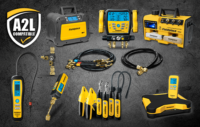
Acquisition Lays Foundation for Fieldpiece APAC Expansion
Fieldpiece Instruments, the leading manufacturer of HVACR tool and test instruments, has announced the acquisition of its Australian master distributor, Fieldpiece Australia, based outside of Sydney. The acquisition establishes a direct corporate presence in Australia and a foundation for further expansion in the Asia-Pacific region.
Since 2001, Steve and Vicki Hartelust have owned and operated Fieldpiece Australia and had tremendous success introducing, positioning, and growing the brand. The Hartelusts’ decision to retire and sell the distributorship aligned directly with Fieldpiece’s global growth initiatives. They will aid the transition over the coming months as Fieldpiece integrates the business and hires a local management team.
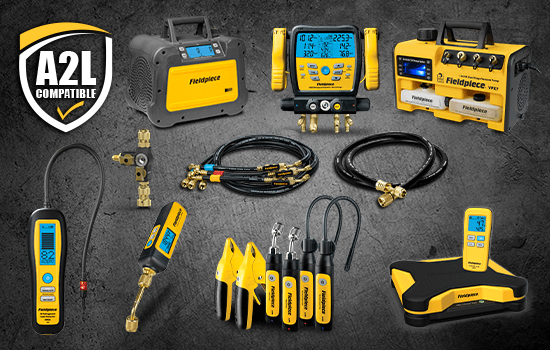
“We are thankful to the Hartelusts for their dedication to the brand and the excellent job they have done building the market over the last 20 plus years,” said Jim Gregorec, vice president of business development and licensing for Fieldpiece. He continued, “We’re eager to build on what they started by installing a local team and further exploring APAC opportunities.”
Fieldpiece is actively seeking a dynamic and experienced General Manager, located in Australia, to lead the new center of excellence and drive the next phase of growth. This role will be pivotal in steering strategic initiatives and overseeing daily operations. For more information, see the position listing on fieldpiece.com/careers.
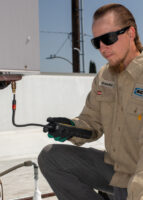
Okay, we know soap bubbles are the traditional method for refrigerant leak detection on HVACR systems and they can be a very tried and true indicator. But when you need to pinpoint micro-leaks fast, an electronic detector with a higher sensitivity than bubbles can be the ticket. The four main types of electronic leak detectors Read more
Okay, we know soap bubbles are the traditional method for refrigerant leak detection on HVACR systems and they can be a very tried and true indicator. But when you need to pinpoint micro-leaks fast, an electronic detector with a higher sensitivity than bubbles can be the ticket.
The four main types of electronic leak detectors available to HVACR techs include: heated diode, corona discharge, infrared and ultrasonic. The following is a snapshot of how the different technologies work and the ins and outs of each to help you determine which is the best fit for your toolkit.
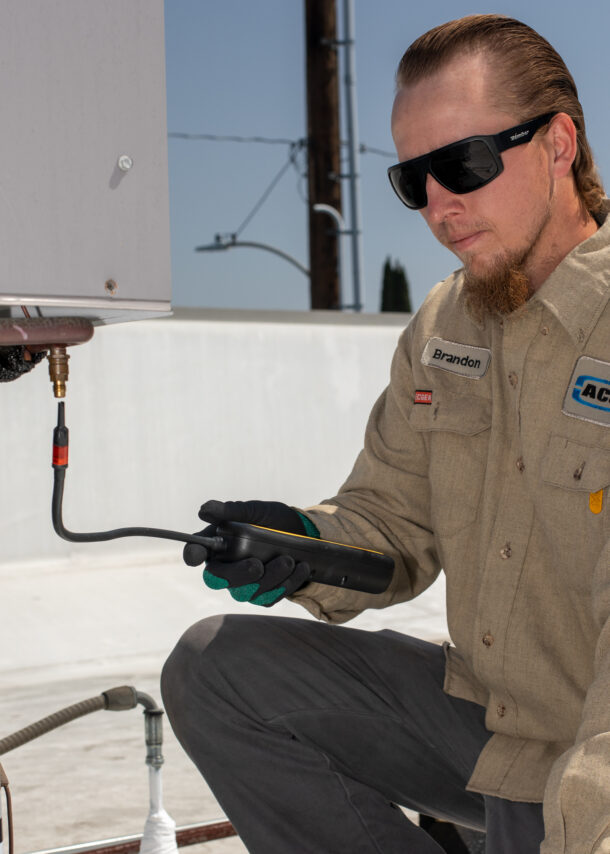
Heated Diode Detectors
With a heated diode detector, sampled air is heated to a high temperature, ionizing halogenated refrigerant gases. The resulting charged chlorine and fluorine ions, even in trace amounts, generate current through the diode which then triggers an alarm. Heated diodes detect leaks of HFC, CFC, HCFC, HFO, H2N2 (Tracer Gas) and other refrigerant blends. The Fieldpiece DR58 Heated Diode Leak Detector performs particularly well with R410A and sniffs refrigerant leaks as small as 0.03 oz/yr – that’s 20 times more sensitive than soap bubbles.
Heated diode detectors are not prone to false alarms, but their sensor life may be affected by excessive refrigerant exposure and contaminants like oil. The sensor should be checked regularly with a calibrated reference leak. It is recommended to replace to the Fieldpiece DR58 sensor after approximately 300 hours of use.
Corona Discharge Detectors
In a process similar to heated diode detectors, corona discharge detectors also react to a change in current flow from ionized gases. However, they pull sample air through an electrical field around an electrode. Gases are broken down by the electric arc (corona discharge), causing a change in electrode current which then signals a leak.
False alarms can occur with corona discharge detectors because they do not trigger on specific refrigerant compounds. Response times are slightly slower than heated diodes and corona sensor life can be as short as 24 hours of use.
Infrared Leak Detectors
Infrared detectors shine a beam of infrared (IR) waves through potentially contaminated air to detect and analyze trace amounts of refrigerant and signal a leak. Because light absorption in the IR spectrum is gas-specific, they are the least susceptible to false-positive alarms and considered highly accurate across all refrigerant types. Infrared detectors also have the edge with newer refrigerants that contain less chlorine and fluorine, the trigger for heated-diode sensors.
When considering the cost of ownership of a leak detector, the long life of the infrared sensor will factor in the equation. For example, the sensor life is approximately 10 years for the Fieldpiece DR82 Infrared Leak Detector.
Ultrasonic Leak Detectors
An ultrasonic leak detector is also known as a “listening detector.” When refrigerant escapes from a pressurized system, it creates tiny sound fluctuations in the form of high-frequency sound waves that the sensor picks up.
These detectors can hear very small leaks on high-pressure systems and their sensors last for a long time. However, when a system has low pressure, these detectors are not as accurate or effective. Ultrasonic leak detectors can also be affected by jobsite noise.
Techs have multiple options when looking for electronic leak detection tools, including heated diode, corona discharge, infrared, and ultrasonic. While each has its merits, the tool that’s right for you will depend on the refrigerants you work with now and expect to work with in the future, the accuracy desired, and your sensitivity to overall cost of ownership. An electronic leak detector is an investment that makes your job easier, so it’s worth the homework to figure out which one needs a spot in your tool bag!
Courtesy of Fieldpiece Instruments

Recipients Awarded $2,500 Each Toward HVACR Careers; Fieldpiece to Award Additional $10K at 2024 SkillsUSA National Leadership & Skills Conference Fieldpiece Instruments, a leader in test instruments and tools for HVACR professionals for over 30 years, is proud to announce the winners of the third annual #MasteroftheTrade program. This year, six deserving students have been Read more
Recipients Awarded $2,500 Each Toward HVACR Careers; Fieldpiece to Award Additional $10K at 2024 SkillsUSA National Leadership & Skills Conference
Fieldpiece Instruments, a leader in test instruments and tools for HVACR professionals for over 30 years, is proud to announce the winners of the third annual #MasteroftheTrade program. This year, six deserving students have been selected to receive $2,500 each to fund their continued education in the heating, ventilation, air conditioning and refrigeration (HVACR) trade or the option of an in-kind tool donation to jumpstart their careers.
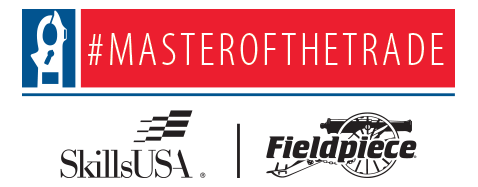
Administered through SkillsUSA, the #MasteroftheTrade program aims to bridge the talent gap in the U.S. labor market for HVACR technicians by providing financial support to individuals pursuing a future in the industry. The winners of this program demonstrate exceptional skill, passion and dedication to their craft, embodying Fieldpiece’s spirit of excellence.
“We are thrilled to give back to our industry by awarding tuition or tools to these up-and-coming HVACR professionals,” said Tony Gonzalez, director of training at Fieldpiece Instruments. “There is a common thread of curiosity, problem-solving skills, understanding of craftmanship and desire to embrace challenges among the selected recipients that ensures a bright future in HVACR. Congratulations to this year’s winners!”
The six accomplished SkillsUSA students selected to receive the 2024 #MasteroftheTrade award are:
- Cole Kelly from Billerica, MA
- Colton Rentschler from Sinking Spring, PA
- Cadin Blais from Watertown, SD
- Mohamed Deyab from Harlingen, TX
- Peyton Hoenig from Asheboro, NC
- John Chaney from Knoxville, TN
Fieldpiece Instruments will also award $10,000 to the top-ranking high school and college/postsecondary students in the HVACR category at the SkillsUSA National Leadership & Skills Conference in June.
Fieldpiece Instruments first introduced the #MasteroftheTrade program in 2022 to address the growing need for skilled HVACR technicians. The program has since become an integral part of the company’s commitment to supporting education and workforce development in the HVACR industry.
For more information, please visit the #MasteroftheTrade program webpage.
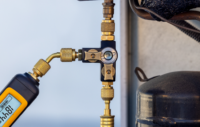
New VCRTs Help Technicians Recover Refrigerant Faster and with Confidence Every Time Fieldpiece Instruments, the leading manufacturer of tool and test instruments that enhance the work of HVACR professionals, introduced three valve core removal tools (VCRTs) designed to improve system charging, recovery and evacuation tasks. VCRTs remove the valve core from service valves in air conditioning Read more
New VCRTs Help Technicians Recover Refrigerant Faster and with Confidence Every Time
Fieldpiece Instruments, the leading manufacturer of tool and test instruments that enhance the work of HVACR professionals, introduced three valve core removal tools (VCRTs) designed to improve system charging, recovery and evacuation tasks. VCRTs remove the valve core from service valves in air conditioning, heat pump, and refrigeration systems to replace defective cores and provide an unobstructed flow of refrigerant for faster servicing. The Fieldpiece VCRTs represent a significant leap forward in valve core removal technology, overcoming the limitations of existing tools.
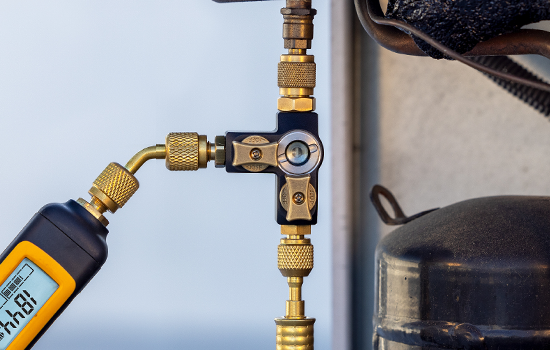
One of the game-changing features within the Fieldpiece VCRT lineup includes an integrated sight glass that allows technicians to verify at a glance that the valve core is captured prior to removing it and confirm when refrigerant is flowing. Fieldpiece eliminated the frustration that techs face when it takes multiple tries, and lost refrigerant, before the valve core is captured with current competitive products. The Fieldpiece VCRT capture tip also includes an interior gasket that the valve core pin presses into to secure it for removal. No more fishing around for lost valve cores – a solid grip guarantees that the job is done right the first time, every time.
Another Fieldpiece exclusive feature is a comfort spinner, a free-spinning, rubberized cap that makes removing and inserting the valve core, while under pressure, easier and more comfortable. Like the sight glass, this comfort spinner is available on the VC1G and VC2G models. All three VCRT models, including the ultra-compact VC1, include a magnet in the cap to keep the removed valve core on hand during service.
All VCRT models are equipped with a 1/4” service port fitting that can be swapped in the field with an optional 5/16” service port fitting for mini-split systems, conveniently reducing the number of tools to carry. Replacement capture rod assemblies also streamline the maintenance process. Techs can say goodbye to deep-buried O-rings, as these simple replacement kits reduce downtime and expedite the repair process.
The premium VC2G tool features a dual ball valve design that protects attached vacuum gauges and pressure probes and adds versatility for connecting hose lines and isolating system service ports.
“Our VCRTs offer benefits that current VCRTs on the market do not have,” notes Jeb Ball, vice president of sales and marketing at Fieldpiece Instruments. “We collaborate with techs to understand the pain points and develop solutions that enhance their jobs. The VCRT line expands our arsenal of tools built for efficiency, versatility and durability, and underscores our commitment to innovations that allow technicians to work faster with more reliable results.”
Wholesalers are purchasing inventory now and product will be available to techs in April. To learn more about the benefits of Fieldpiece VCRTs, visit https://www.fieldpiece.com/valve-core-removal-tools.
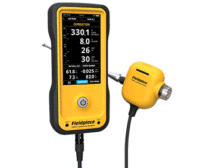
New Heating Test Tools Establish Industry Gold Standard for Diagnosing Furnace Safety and Fuel-Efficiency Fieldpiece Instruments, the leading manufacturer of professional-grade tools for HVACR pros by HVACR pros, today announced the launch of two new combustion analyzer models, with compatible printers sold separately or bundled together. The new Fieldpiece Combustion Analyzers, CAT85 and CAT45, enable HVACR professionals Read more
New Heating Test Tools Establish Industry Gold Standard for Diagnosing Furnace Safety and Fuel-Efficiency
Fieldpiece Instruments, the leading manufacturer of professional-grade tools for HVACR pros by HVACR pros, today announced the launch of two new combustion analyzer models, with compatible printers sold separately or bundled together. The new Fieldpiece Combustion Analyzers, CAT85 and CAT45, enable HVACR professionals to assess heating system emissions, draft pressure, and temperatures to support the overall fuel-efficiency and safety of furnaces. These new combustion analyzer models make analysis easier and more effective with a large touchscreen display interface delivering effortless readings, new sensor technology that maximizes uptime on the jobsite, a convenient rechargeable battery, and industry-leading wireless range when used with the Job Link® System App.
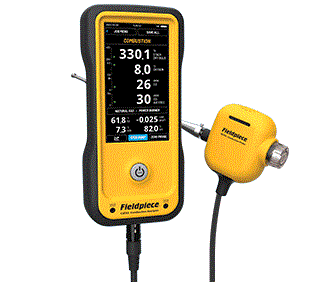
“Optimizing combustion can lower energy consumption and costs and is critical to preventing pollution risks to humans and the environment,” said Jeb Ball, Vice President of Sales and Marketing at Fieldpiece Instruments. “We developed the CAT85 and CAT45 to improve combustion analysis through optimized thermal processes in order to elevate the technician experience and reduce emissions. We are proud to add these new combustion analyzers to our full range of professional-grade HVACR tools to improve how technicians assess and monitor combustion data during installation, maintenance and repairs.”
Starting with a convenient one-touch On-button with immediate analysis readily available from the onset, these tools are intuitive, user-friendly and make data simple to scan quickly. Techs appreciate the clear view of all information on a single screen, the easy-to-navigate touchscreen display design and simple user-interface.
The CAT85 and CAT45 both feature Fieldpiece patent pending SensorVault™ technology that offers lower cost of ownership. This patent pending feature extends sensor life by sealing the sensors from oxygen in the air during storage. These sensors are warrantied for four years and are field replaceable – meaning maximum uptime on the jobsite.
Featuring a thick over-molded construction, a long flexible hose/cord and a padded carrying case, the combustion analyzers are designed to handle the rigors of any job site. They measure O2, CO, CO2, flue temperature, airtemperature and draft/gas pressure, to ensure combustion safety and efficiency. Plus, the CAT85 and CAT45 come with a rechargeable battery that lasts for up to seven hours and enable charges in trucks between jobs and overnight. Compatibility with the Fieldpiece Job Link® System App featuring its industry leading 1000-foot wireless range, means techs can view trends, draft pressure, and customer details seamlessly and conveniently.
On the commercial and residential side, the CAT85 features a built-in manometer, meaning one less tool to carry to the job; and live draft pressure that lets technicians troubleshoot while running system analysis.
The CAT85 automatically separates and returns accumulated water to the flue using the patent pending HydroCycle™ Pump technology that saves time.
In addition to the two new combustion analyzer models, CAT85 and CAT45, Fieldpiece has also launched compatible printer model options including the Combustion Analyzer HC with Wireless Printer, CAT85K2; Combustion Analyzer with Wireless Printer, CAT45K2; and the stand-alone Wireless Printer, CATPR.
For more about the latest innovations, visit: www.fieldpiece.com/combustionanalyzer.
